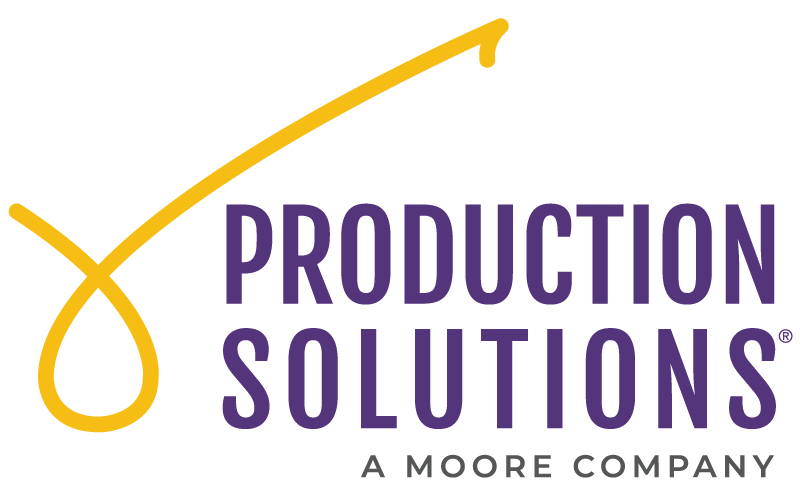Thermostats and Hiring – A Look at Business Transformation and AI

Michael Solomon
IT Security ManagerYou have probably noticed the terms “business transformation,” “automation,” and “artificial intelligence” have made their way into conversations more and more over the past few months. These terms describe the areas in which Production Solutions (PS) is leading in our industry. PS is committed to continuous innovation to demonstrate genuine care to our clients. So, let’s decipher each of these terms so there is no confusion regarding what these terms mean to PS specifically.
Creatures of Habit
As humans, we are all creatures of habit. We do things in the same way because if it works for us, why we should change? Good habits can be beneficial for us. Good habits allow us to carry out mundane tasks almost subconsciously, allowing us the ability to exert more mental energy on higher-level tasks. Do you remember that overwhelming feeling the first time you drove a car all by yourself? Mirrors, seat adjustments, speed limits, and many things to consider! Chances are, you do not feel that way now. After a little while, driving became second nature. Our roles at PS can be that way, too. Even good habits can hold us back when things around us change and we do not. For example, if you are used to driving at 55 mph on a particular road and the county changes the speed limit to 45 mph, old habits can lead to getting a ticket!
Business transformation (BX) is about looking at our work habits and identifying those that need to be updated. As our business transforms at PS, some of the tasks within our roles may need a facelift to align with today’s client expectations. The “old ways” may not be negative, but sometimes a few tweaks can help us meet our client expectations more efficiently. Focusing less on mundane tasks allows us to spend more time doing the interesting parts of our jobs. This is the essence of BX.
So, how do we transform our business? Earlier this year we asked the Quandary Consulting Group to partner with us to interview many PS staff and help us determine any workflows or habits that appear to be pain points. The goal was to make these workflows more efficient and to incorporate automation when possible. Improving workflows and empowering us to better meet our organization’s goals is the heart of BX. So, BX focuses on how we do what we do. Automation can help by using technology to carry out some of our “habit work.” The goal of automation in BX is to reduce the mundane work we have to do. Let technology do it faster and with less hassle.
Home Thermostats
A good example of automation is a home thermostat. Thermostats used to be very simple. In the past, if you were cold, you would get up from the couch, walk down the hall, and either turn a dial or move a lever to change the setting to tell the furnace to turn on and produce heat for your home. Later, if you become too warm, you would, again, get up from the couch, walk down the hall, and turn the dial or oppositely move the lever to stop the furnace from creating heat. That was a manual process.
Due to the availability of cheap electronics, programmable thermostats eventually became available. These devices allowed people to enter settings for heating and cooling based on schedules. If you wanted your home to be at 68 degrees at night and 73 degrees during the day, you could enter a schedule into the thermostat, and it would automatically change the thermostat setting based on your preferences. Automation sounds great, right? Well. It is, but there is a cost. Automation can save a lot of manual effort, but it takes effort to set up the schedule and it is not always flexible. For example, if there is an uncommonly hot or cold spell, the basic thermostat schedule may not do what you want. You still may need to go down the hall and adjust the thermostat manually.
Automation Does Not Solve for Everything
Automation in PS workflows is like a thermostat. The BX process is about finding workflows that are not efficient, and automation is just one way of making them more efficient. One important thing to note is that automation does not fix anything- it just uses technology to do things faster than humans. That is why BX only uses automation after the workflow is updated to be more efficient.
Building on the success of automatic thermostats, manufacturers have released a new generation of models that “learn” behavior and do not need rigid schedules. And that brings us to artificial intelligence (AI). AI is nothing more than analyzing past data and determining where new data fits. If you buy a new learning thermometer, and for several days, set it to what is comfortable for you, the thermostat using AI will “learn” what you like. If an unexpected snowstorm in October causes the indoor temperature to drop, the thermostat will “know” that you like it to be 73 degrees inside. It will act on your behalf. This is the essence of AI. Automation does what you tell it to do, and AI acts based on what it has learned from you.
Hiring AI
A question I am asked a lot is: “How is PS going to use AI?” However, that does not get to the crux of innovation. The real question is: “What is the best use of AI at PS?” Let’s look at AI as a person PS would like to hire. PS does not just hire someone because they are hip and trendy. PS follows several steps before hiring anyone. The first step is to identify a need. If no clear need exists, there is no reason to hire anyone new. Then a role, along with responsibilities, is defined that will satisfy the need. Finally, PS looks for the right person to hire who possesses the qualifications that fit the role.
PS is approaching AI just like hiring a valued team member. We are identifying the need(s) and building role descriptions that AI can fulfill. Those may sound like easy tasks, but they are not. Parallel to the way that PS does not hire someone because they are hip and trendy, we are not going to roll out AI just because it is hip and trendy. AI is a cool technology, but PS is built on providing value to our clients. That is how AI will become a part of PS. We will “hire” AI to fill roles that satisfy needs that help us meet our goals.
Always remember that AI is a technology that is employed by PS — it does not redefine our identity or purpose.
About the Author






